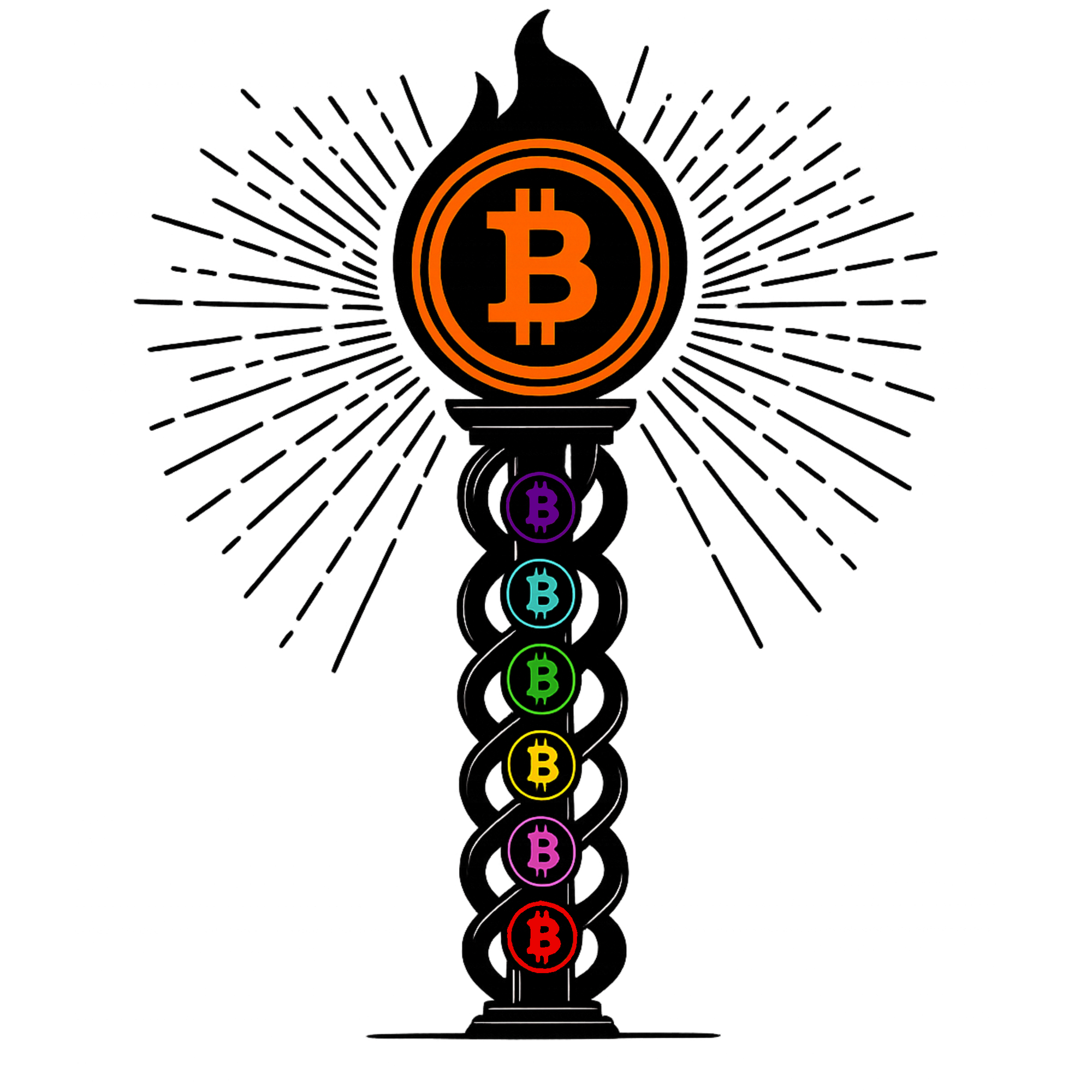What is Bitcoin? History & Austrian Economics
The Origins of Bitcoin: A Revolution Born from Economic Crisis
Bitcoin emerged not as a mere technological innovation, but as a deliberate response to profound systemic failures in global finance. The 2008 financial crisis revealed critical vulnerabilities in centralized banking systems, triggering worldwide economic instability that affected millions. As governments authorized massive bailouts and central banks implemented unprecedented quantitative easing programs, many began questioning the sustainability and fairness of traditional monetary structures.
Satoshi Nakamoto's Vision
On October 31, 2008, amid this atmosphere of financial uncertainty, an anonymous figure or group operating under the pseudonym Satoshi Nakamoto published a nine-page document titled "Bitcoin: A Peer-to-Peer Electronic Cash System." This whitepaper outlined a revolutionary concept: a fully decentralized digital currency that could operate without intermediaries like banks or payment processors.
Nakamoto's creation addressed specific problems inherent in traditional finance:
- The trust problem - Conventional financial systems require participants to trust central authorities who control monetary policy and transaction validation.
- The double-spending problem - Digital currency had previously required central authorities to prevent the same money from being spent twice.
- The censorship problem - Traditional finance allows authorities to block or reverse transactions for political or regulatory reasons.
On January 3, 2009, Satoshi brought this vision to life by mining the first block of the Bitcoin blockchain—known as the genesis block. Embedded within this block was a message quoting a headline from The Times: "Chancellor on brink of second bailout for banks." This wasn't merely a timestamp; it was a manifesto. The message highlighted the very problem Bitcoin was designed to solve: the cycle of financial irresponsibility, crisis, and government intervention.
The Austrian Economic Framework
To fully appreciate Bitcoin's significance, one must understand its philosophical foundations in Austrian economics—a school of economic thought that stands in stark contrast to mainstream Keynesian economics which dominates contemporary government policy.
Core Austrian Economic Principles Reflected in Bitcoin
Sound Money and Natural Scarcity
Austrian economists like Ludwig von Mises and Friedrich Hayek championed "sound money"—currency whose value cannot be manipulated by central authorities. They argued that money should maintain purchasing power over time and be resistant to debasement.
Bitcoin embodies this principle through its mathematically enforced scarcity. The protocol will never produce more than 21 million bitcoins, with new coins released on a predetermined and gradually diminishing schedule. This fixed supply stands in direct opposition to fiat currencies, which central banks can create in unlimited quantities, potentially leading to inflation and wealth erosion.
The 21 million coin limit isn't arbitrary—it creates a digital parallel to naturally scarce resources like gold, which Austrian economists have historically favored as monetary bases. However, unlike gold, Bitcoin's scarcity is verifiable through code rather than geological estimates.
Decentralization and Market Mechanisms
Austrian economics places tremendous value on decentralized decision-making and market-based solutions. This school of thought argues that central planning inevitably fails because no small group of planners can efficiently process the vast information distributed among millions of market participants.
Bitcoin's architecture reflects this principle through:
- Distributed consensus - No single entity controls the network; rather, consensus emerges from thousands of independent nodes verifying transactions.
- Market-based fee structure - Transaction costs are determined by supply and demand dynamics, not central authorities.
- Voluntary participation - The network grows through individual choice rather than mandate.
The protocol's open-source nature also embodies the Austrian emphasis on transparency and voluntary cooperation. Anyone can examine Bitcoin's code, propose improvements, or choose to support or reject changes based on their individual assessment.
Value Creation Through Work
Austrian economics emphasizes that value must be created through productive effort, not arbitrary decree. Bitcoin's Proof of Work (PoW) consensus mechanism aligns perfectly with this philosophy.
Miners must expend real-world resources—computing power and electricity—to validate transactions and secure the network. This expenditure of energy ties Bitcoin creation to actual productive work, similar to how gold mining requires physical labor and capital investment. The difficulty adjustment mechanism ensures that bitcoin production remains steady regardless of how much computing power joins the network, maintaining its predictable issuance schedule.
This contrasts sharply with fiat currency creation, which requires only political decisions and keystrokes on central bank computers—a process Austrian economists criticize as disconnected from genuine value creation.
Protection Against Monetary Inflation
Austrian economists have consistently warned about the dangers of monetary inflation. Friedrich Hayek himself wrote extensively about how inflation distorts economic calculation and redistributes wealth unfairly.
Bitcoin's fixed supply schedule makes it inherently resistant to inflation, providing a technological solution to what Austrian economists see as a political problem. Each halving event (approximately every four years) reduces the rate of new bitcoin creation, culminating eventually in zero new issuance when all 21 million coins have been mined.
This predictable monetary policy stands in stark contrast to the often opaque and changeable policies of central banks. While the purchasing power of fiat currencies has declined dramatically over decades, Bitcoin offers the possibility of a currency that maintains or increases in purchasing power over time.
Bitcoin's Contemporary Relevance
The theoretical alignment between Bitcoin and Austrian economics takes on particular significance in today's economic landscape. Since the 2008 crisis, central bank balance sheets have expanded dramatically, government debt has reached unprecedented levels, and many currencies have experienced significant devaluation.
The COVID-19 pandemic accelerated these trends, with major economies implementing monetary stimulus programs of historic proportions. The Federal Reserve's balance sheet, for example, more than doubled between 2020 and 2022, reaching nearly $9 trillion. This rapid expansion of the money supply has contributed to significant inflation in many economies, validating concerns long expressed by Austrian economists.
Bitcoin provides not just a theoretical alternative but a practical tool for financial sovereignty in this environment. It offers:
- Protection against currency debasement - As the purchasing power of fiat currencies diminishes, Bitcoin's fixed supply becomes increasingly attractive.
- Censorship resistance - In a world of increasing financial surveillance and control, Bitcoin enables transactions that cannot be blocked by political authorities.
- Financial inclusion - For the estimated 1.7 billion people globally without access to banking services, Bitcoin offers financial participation without institutional gatekeepers.
Beyond Currency: A Paradigm Shift
Understanding Bitcoin through the lens of Austrian economics reveals that it represents more than just a new payment technology or investment asset. It embodies a fundamental rethinking of money itself—a return to principles of sound money that have been gradually abandoned in the modern era.
Bitcoin doesn't just operate alongside the traditional financial system; it challenges its very foundations. By removing the need for trusted third parties and establishing rules through code rather than policy, Bitcoin creates the possibility of a financial system based on mathematical certainty rather than human discretion.
In this light, Bitcoin can be seen as the practical implementation of ideas that Austrian economists have advocated for decades. It provides a real-world laboratory for testing theories about sound money, free markets, and individual economic sovereignty that previously existed primarily in academic discourse.
The Path Forward
As global economic uncertainties persist and traditional monetary policies reach their limits, Bitcoin offers a compelling alternative based on principles of transparency, scarcity, and individual control. For those concerned about the direction of contemporary monetary policy, it provides not just a theoretical framework but a practical tool for financial self-determination.
Understanding Bitcoin's origins and its connection to Austrian economic thought isn't merely an academic exercise—it's essential for grasping why this innovation continues to gain adoption despite volatility and regulatory challenges. Bitcoin represents more than a technological advancement; it's the manifestation of a centuries-old debate about the nature of money itself.
As we face unprecedented economic challenges and monetary experiments, Bitcoin stands as both a warning about the fragility of traditional systems and a beacon pointing toward a potential alternative—one built on the time-tested principles of sound money that Austrian economists have long championed.
Are you ready to explore this financial revolution further? 🚀


